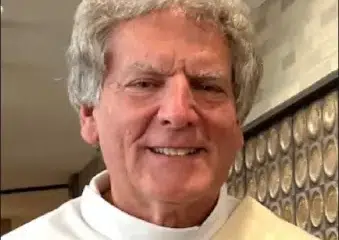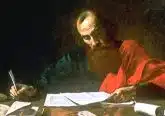Adultery of the Heart, Part 1
Note: This article is part of an ongoing series on Pope St. John Paul II’s “Theology of the Body” (TOB).
Jesus came not to abolish the law and the prophets but to fulfill them (Mt. 5:17). Through His teaching and example, the Lord has called us, His disciples, to a level of sanctity that goes beyond what the Old Law prescribed: “For I tell you, unless your righteousness exceeds that of the scribes and Pharisees, you will never enter the kingdom of heaven” (Mt. 5:20). External conformity to the demands of the moral law is not sufficient. Jesus desires not only our exterior obedience, but even more, our interior conversion of heart.
In Theology of the Body, Pope St. John Paul II explored this call to conversion of heart in light of the New Law of the Gospel and the perennial attraction between the sexes. In particular, he took as his starting point Matthew 5:27-28, in which we read, “You have heard that it was said, ‘You shall not commit adultery.’ But I say to you that everyone who looks at a woman lustfully has already committed adultery with her in his heart.”
Adultery was a very important concept in the Old Testament. Not only was it explicitly referenced in the Ten Commandments, adultery was also a frequent image used to describe Israel’s unfaithfulness to the Old Covenant. In many prophetic books of the Old Testament (e.g., Hosea, Ez. 15, etc.), Israel is portrayed as an unfaithful bride who repeatedly turns aside from her husband (Yahweh), giving herself over to other spouses through adultery and even prostitution. These adulterous lovers are the various idols and pagan religious practices that crept into the life of the Israelites at different points in their history, as well as their lack of consistency in following the obligations of the Mosaic Law.
Despite this prophetic tradition, the Israelites made certain accommodations when it came to how they understood marriage, such as the possibility of divorce and limited acceptance of polygamy. Jesus challenged their “hardness of heart” (Mt. 19:8), indicating that these concessions were not part of God’s original plan nor are they part of the Kingdom of God He came to establish. Jesus further renewed belief in the indissolubility and exclusivity of marriage, and He supernaturally fulfilled them through His spousal gift of self to the Church. Subsequently, the sixth commandment (“You shall not commit adultery” Ex. 20:14, Deut. 5:18) came to be understood as protecting the sanctity of marriage by proscribing all sinful uses of the sexual faculty.
According to Pope St. John Paul II, “Adultery indicates the act by which a man and a woman who are not husband and wife form ‘one flesh’” (TOB 37:6). When we engage in sexual acts outside of a marriage covenant, we violate the purpose of our sexual faculty to form, through bodily self-giving, a visible sign of the communion of persons in marriage. Our sexual faculty is intimately connected with the spousal meaning of the body, which reveals that our bodies are apt to express a total gift of self, and the only appropriate “place” for this total gift of self is in a marriage between a man and a woman.
Our Lord not only affirms the immorality of using the sexual faculty outside of marriage, but as Pope St. John Paul II emphasized, shifts the “center of gravity” in his moral teaching to the level of our hearts. Exterior acts of adultery are clearly immoral according to both the Old Law and the New Law of the Gospel, but our call to holiness goes further. Jesus speaks in Matthew 5 of adultery of the heart. How are we to understand this adultery committed in the heart, and what does it have to do with lustful looking?
In TOB, Pope St. John Paul II went on to engage in a penetrating analysis of the human heart to enlighten our understanding of these matters. In the next few installments in this series, we will mine his insights so that we can more accurately discern the movements of our hearts as we strive to follow Jesus faithfully.
 Dr. Andrew Sodergren, MTS, PSY.D is a Catholic psychologist and director of psychological services for Ruah Woods. He speaks on the integration of psychology and the Catholic faith. He and his wife, Ellie, have five children.
Dr. Andrew Sodergren, MTS, PSY.D is a Catholic psychologist and director of psychological services for Ruah Woods. He speaks on the integration of psychology and the Catholic faith. He and his wife, Ellie, have five children.
This article appeared in the December 2023 edition of The Catholic Telegraph Magazine. For your complimentary subscription, click here.













